Balance is often an overlooked skill to practice unless teaching or coaching gymnastics, the very young, or students who have disabilities that effect mobility. But maintaining and improving balance is essential for all students and should be a regular part of any PE, Adapted PE, or sports program. Adding a few balance skills during warmup takes little time and benefits other activities. For students with balance deficits, more time, emphasis, and practice can be allocated to improve balance. Some of these suggested activities and techniques will not only help improve balance but also athletic performance.
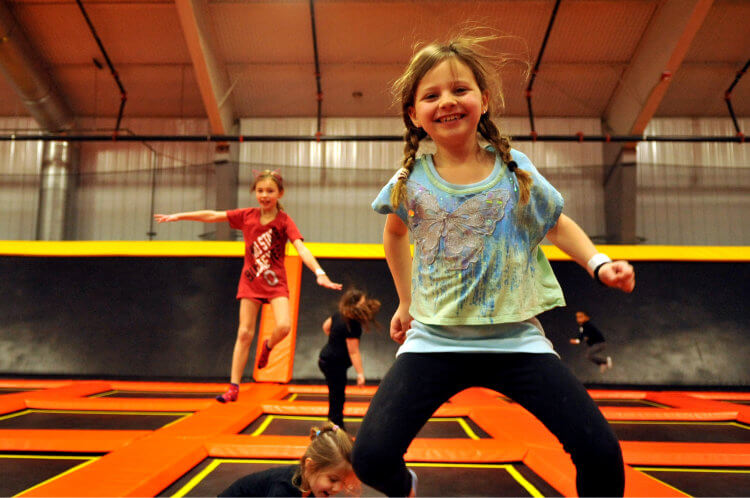
Balance Defined and Explained
Balance can be defined as an even distribution of weight that enables someone or something to remain upright while remaining stable and achieving equilibrium. In general, there are three main elements that help in achieving balance:
- Vision assists through input from the eyes and enables the body to understand its surrounding environment.
- Proprioceptors within the body react to changes in body position. The stimulus of balance or counterbalance receives input from these receptors in the base of the body, specifically in the feet, ankles, and joints. This system helps the body’s ability to sense movement of joints and limbs, ultimately, helping the body understand where it is in space while performing complex movements.
- The vestibular system, located within the inner ear, helps the body determine if the body is rotating or turning. This system is made up of three parts located in the ear; the utricle, saccule, and semicircular circles. Both the saccule and utricle help detect gravity (vertical information) and linear movement. The semicircular canals detect rotational movement and are filled with a fluid called endolymph. When a movement is performed, the body sends nerves impulses to the brain by way of the acoustic nerve. The impulse then sends a message to the brain to help the body understand where it is in space or the direction of movement.
Improving Balance
There are several ways to develop and improve these elements to help improve balance. The first method is to perform activities that stress these components through variability, while performing different movements. In the early developmental stages, such as infancy, children stress these components via different movements. Subtle movements such holding their head upright, sitting, crawling, standing, walking, and running can assist development. By engaging in balance activities such as standing on a “balance board”, walking on uneven grass, or performing gymnastics activities, the child will improve stability.
It is possible to increase the difficulty of these activities by removing visual cues or restricting the child’s ability in achieving balance: For example, performing balance activities or movement skills with closed eyes. By closing your eyes, it forces the body to use other balance system to counter balance issues. This will lead to improved balance when vision is reintroduced to the body. Through heightening one’s balance system or senses of awareness, the body will expand variability to accomplish movements in different environments. Other methods of stimulating the vestibular system include standing on a soft cushion or mattress. This will also confuse and stimulate the receptors within the foot and ankle.
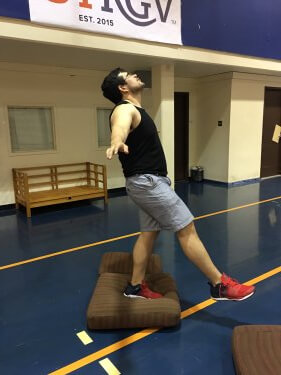
When performing balance skills, it is possible to remove one, two, or even all three of these key elements of balance. For example, try standing on an uneven pillow or cushion, then immediately closing your eyes and tilting your head back. Observe how many seconds you can maintain your balance. You will find that standing steady under these conditions is very difficult. But with practice, performance will improve and will carry over to other activities that require balance.
In general, here are some techniques and skills and that could be performed to help improve balance.
- Mental concentration when performing a skill
- Moving to an uneven beat or doing movements in an unusual pattern
- Movements crossing mid-line and in opposition
- Non dominant eye or hand activities
- Increase muscular strength and endurance
- Postural control skills
- Unstable surfaces
- Unstable swings and moving
Here are some examples of exercises and progressions that stress and can improve balance
- Push Ups
Wall Push-Up: Stand in front of a wall with feet together and arms extended, so that only your finger tips are touching. Descend into the wall until arms are bent to 90 degrees, then push yourself into the standing position. If you are unable to perform the concentric motion, step closer to the wall and progress from there. The goal is to perform the movement at an arms-length away from the wall. Once you have mastered the wall push up, lift one leg up and repeat the same progression.
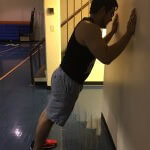
Quadruped Push-Up: From the quadruped position (on all fours with hands under shoulders and knees under hips keeping a flat back), lower your upper body to the floor until your arms are bent at 90 degrees. Press yourself back up to starting position. If you are unable to push yourself back, descend slowly to 90 degrees (counting 5s) and push as far back up as possible, then reset yourself to the starting position.
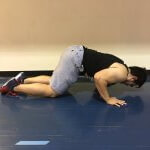
Knee Push-Ups: From the quadruped position, walk your arms forward to where your legs make a 45-degree angle from the floor. If you are unable to push yourself back to the starting position, descend slowly to 90 degrees (counting 5s) and push yourself back up as far as possible, then reset to the starting position.
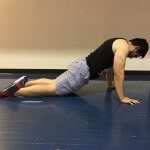
Regular Push-Up: From a standard push-up position lower yourself to 90 degrees then push yourself back up, keeping your body straight. If you are unable to push yourself back up, descend slowly to 90 degrees (counting 5s) then revert to your knees and push yourself back up to Knee Push-Up position
- Front Knee Raises
Bent Knee: Stand next to a chair, and raise your knee as high as possible and maintain it in position for 1s and alternate legs Once you can maintain it for 1s with ease increase the time to 5s then to 10s. Use the chair as needed. Add ankle weights to progress further.
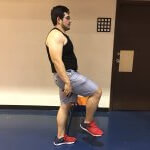
Straight Leg: Stand next to a chair and, keeping your leg straight, raise it as high as possible and maintain the position for 1 second and then alternate legs. Once you can perform the movement for 1s with ease increase the time to 5s then 10s. Use the chair as needed. Add ankle weights to progress further.
- Side Leg Raises
Bent Knee: Stand next to a chair, and bend your knee and maintain it at 90 degrees. Move your knee to the side and maintain it in position for 1s and alternate legs Once you can maintain it for 1s with ease increase the time to 5s then to 10s. Use the chair as needed. Add ankle weights to progress further.
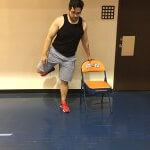
Straight Leg: Stand next to a chair and, keeping your leg straight, raise your leg to the side and maintain the position for 1 second and then alternate legs. Once you can perform that for 1s with ease increase the time to 5 s then 10s. Use the chair as needed. Add ankle weights to progress further.
- Sit to Stand
Stand up Without Support: From a sitting position, stand up without support. If you are unable to stand up, use the armrest support and with as little arm support as needed stand up. If you are unable to stand use a taller chair, to limit the range of motion. If you need another person’s assistance to stand, from a standing position sit down slowly (5s decent), then 10s as it becomes easier. Progress from a taller chair to a shorter chair as you improve.
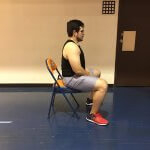
Weighted Sit to Stand: Once you are able to sit to stand without support with ease, add a weighted vest or load.
Unilateral Sit to Stand: From a sitting position, lift yourself up without support using only one leg. If unable to stand with only one leg begin in the standing position and use a single leg 5s eccentric, then 10s as it become easier and you can stand. Return to the standing position using both legs.
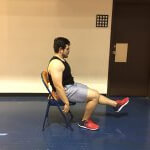
Weighted Unilateral Sit to Stand: Add weight and from the sitting position, lift yourself up without support.
- Calf Raises
Both Leg Raise: While standing next to a chair, lift your heels as high as possible and hold for 5 secs, then come back down. Once you can perform this with ease hold for 10s, 20s, then 30s. Use a chair for balance as needed.
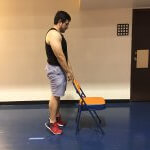
Unilateral Calf Raise: Place the toes of your right foot next to your left ankle. Then lift your left heel off the ground and hold for 5s, then alternate feet. Once you can perform this with ease hold for 10s, 20s, then 30s as you progress. If you are unable to lift your heels of the ground with only one foot, lift both heels off the ground and lift your right foot off the ground and place it next to your left ankle. Use a 5s descent, then 10s as it becomes easier until you can perform the movement.
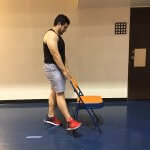
- Chair Leans
Sitting Lean: From a sitting position, sit up with your back straight and lean towards your knees with a 5s eccentric, maintaining your back straight. If you are unable to bring yourself back up use your hands or forearms to push yourself back up, using as little support as possible, until you can do it without help from your hand/forearms.
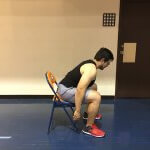
Raised Arm Chair Lean: From the sitting position, sit up with your back straight and raise one of your arms overhead. Lean your torso forwards towards your knees, while maintaining your arms in line with your back. Use a 5s eccentric and then progress to a 10s eccentric. Once you are comfortable, lift both your arms and follow the same progression.
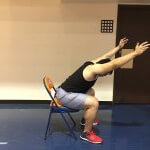
Standing Lean: While standing in front of a chair, place your arms on a chair. Bend your body forward as far as possible, while maintaining a small bend in your knees. Use your arms for balance, but if needed to help yourself back up. Begin by bending to approximately 45 degrees then progress to being parallel to the ground. Use a 5s eccentric and progress to 10s eccentric once you have mastered the 5s eccentric.
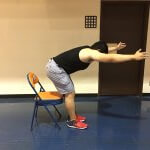
- Single Limb Stances
Stand with feet together and arms at the sides or reached outward. Lift one leg (a) in front of the other “L” stand, (b) behind the other “airplane” stand, or (c) to the side “Y” stand while balancing on the other leg (repeat other side). Movements need to be slow and rhythmical, raise as high as posable, and hold 2-20 seconds each. For support a chair could be used.
- Tandem or Staggered Stance
Stand with feet together with arms at sides or reached outward. Step forward with your right foot heel touching your left foot’s toes (Hold for 2-10 seconds). A chair may be used for support. Alternate by using other foot in front.
- Stepping
Start with four or more soft cushions on the floor spaced out twelve to sixteen inches apart (stride length). Try to walk on each cushion without any pauses and a smooth rhythmical pattern. Cushions can also be used to walk over (lunges) with pauses between each step.
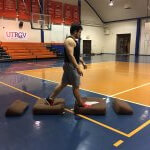
- Grapevine:
Start in the standing position, arms at the sides, and feet together. Step across in front of your left foot with your right leg. Continue to step sideways in a crossing pattern for a set distance and then reverse the pattern on the way back. For added support, use the wall, hold instructor’s hand, or arm crutches. To increase difficulty, increase movement speed, distance, and/or a knee bend during the crossover.
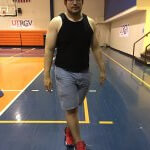
- Heel to Toe
Start by standing with one foot in front of the other. Step forward, slowly swinging the leg around until it is placed inline and touching the other foot. Can hold partner’s hand for support or increase leg swing height (arc) for more difficulty. Closing eyes and/or tilting head upward will also increase difficulty.
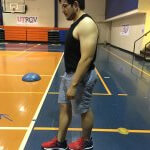
- Step Back
Start with both feet even and bring right or left foot backward a set distance (mark with tape) then return to the original stance. The arms can be extended frontward to help maintain balance. Chair or wall can be used for stability and making the backward step larger with arms held to the side can make the activity harder.
Additional Fun Balance Activities
Note: Add variability (eyes closed/open, dominant/non-dominant limbs, fast/slow, rhythmical/arhythmical, etc.)
- Wheelbarrow Walking
- Crab Walk
- Gymnastics Balance Beam Skills
- Hopscotch
- Stepping Stones
- Biking
- Riding a Unicycle
- Tumbling (Head Stand & Hand stand)
- Body awareness activities like Yoga & palates
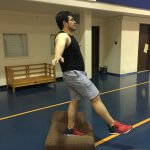
Remember increasing your balance ability is not just for gymnasts or student with disabilities, it will also help improve overall performance in physical education, sports, and life!

no comment
What activities do you do that require balance? Please answer and reply.
Thank you.
– Crystal Johs